![]()
Since its release 30 years ago,
"Back to the Future" has been
everyone's favorite time-travel movie. It's remained a must-see long enough for Marty McFly's own kids to enjoy it.
Even so, there's much you may not know about the beloved sci-fi comedy, from the unused ideas that popped up in other films, to why there has yet to (thankfully) be a reboot. To celebrate Back to the Future Day (October 21), here are 30 things you need to know about Marty McFly's first trip through time.
"Back to the Future 30th Anniversary Trilogy" is available to own now on Blu-ray & DVD.
![]() 1.
1. Director
Robert Zemeckis and co-screenwriter Bob Gale (pictured above) tried for years to create a time-travel story. The key came in 1980, when Gale was looking over his father's high school yearbook and wondered whether he and his father would have been friends if they'd both been teenagers at the same time.
2. Zemeckis and Gale took their idea to Steven Spielberg, who'd already made three movies with them ("I Wanna Hold Your Hand," "1941," and "Used Cars"). Spielberg liked the idea, but the pair held off, fearing that they'd get a reputation in Hollywood as filmmakers who only got work because of their relationship with Spielberg.
3. According to Gale, the pair pitched the script 40 times without success. Disney rejected the idea as too Oedipal. Columbia, on the other hand, felt the film wasn't sexy enough. (This was the era of "Porky's" and the teen sex comedy.) Only after Zemeckis had a hit on his own, his 1984 work-for-hire
"Romancing the Stone," did the director have the clout to get "Back to the Future" made -- at Universal, with Spielberg producing.
4. Then-Universal chief Sid Sheinberg wanted the heroine's mother renamed Lorraine, after his wife, "Jaws" star Lorraine Gary. He also wanted the film's title changed to "Spaceman from Pluto," reportedly believing that no film with the word "future" in the title could be a hit. Zemeckis and Gale accepted the first request but rejected the second.
5. Marty McFly was named after a production assistant Zemeckis and Gale had known on the set of "Used Cars."
![]() 6.
6. Bullying villain Biff Tannen (Thomas F. Wilson, pictured) was named for Ned Tanen, a studio executive Zemeckis and Gale had clashed with during the making of "Used Cars."
7. To play Marty, the filmmakers wanted
Michael J. Fox, but he was unavailable due to his commitment to his hit NBC sitcom, "Family Ties." Instead, they hired Eric Stoltz, fresh from his star-making dramatic performance in "Mask." As the shoot progressed, however, it became clear to the filmmakers that Stoltz wasn't working out. His performance was too "heavy" and lacked the comic energy they were looking for. Five weeks into the shoot,
Zemeckis made the painful decision to fire the actor and replace him with Fox, who had arranged to shoot "Family Ties" during the day and "Back to the Future" at night. You can see some of the extant footage of Stoltz as Marty, along with the filmmakers discussing his firing, in
this video.
8. Crispin Glover, who played Marty's father, is actually three years younger than Fox.
9. Christopher Lloyd landed the role of Marty's inventor pal, Doc Brown, beating out his "Buckaroo Banzai" co-star John Lithgow, as well as Dudley Moore and Jeff Goldblum.
10. Einstein, Doc's dog and the time machine's first test pilot, was originally written as a chimp.
11. Lea Thompson was cast as Marty's mother because the filmmakers liked her chemistry with Stoltz in the movie "The Wild Life."
![]() 12.
12. Yes, that's
Billy Zane (far left), in his first feature role, as one of teenage Biff's thug pals.
13. Melora Hardin, best known for playing Jan on NBC's "The Office," was originally cast as Marty's girlfriend, Jennifer. It would have been a big break for her, but before she'd shot a single scene, Stoltz was fired, and she was fired too because she was so much taller than Fox. Claudia Wells was hired in her place.
14. The famous Hill Valley clock tower, so pivotal to the plot, stands on Courthouse Square, a set on the Universal backlot that's been used in such famous films as "To Kill a Mockingbird" and the Spielberg-produced "Gremlins." After its use in the "BTTF" trilogy, it popped up again on TV's "Buffy the Vampire Slayer" and in the movie "Bruce Almighty."
15. Originally, Gale's time machine was a stationary box -- a refrigerator, in fact. To harness the power needed to make it travel through time, there was to be a scene where the fridge (with Marty inside), was taken to a nuclear test site in Nevada, where Doc Brown would somehow capture the energy from an atomic explosion. Zemeckis ultimately rejected this idea, fearing that impressionable kids would accidentally lock themselves in refrigerators and suffocate. But producer Spielberg liked the fridge-nuking idea enough to use it 23 years later in "Indiana Jones and the Kingdom of the Crystal Skull."
16. Instead, Zemeckis came up with the idea of a mobile time machine, which led to the idea of using a DeLorean. The gull-wing-door car, already something of a time capsule joke even in 1985, was ideal, Zemeckis figured, because it could easily be mistaken for a flying saucer.
17. The filmmakers had a product-placement deal with Pepsi (there's even a Pepsi Free joke written into the script). The cola bottler objected to a similar joke about Tab (a product of rival soda maker Coca-Cola), but the filmmakers refused to cut it.
![]() 18.
18. For Marty's all-important rock 'n' roll performance at the school dance, Fox learned to mimic the guitar moves with his hands, but his showboating solo was dubbed by guitarist Tim May. His vocals were dubbed by singer Mark Campbell of Jack Mack and the Heart Attack.
19. Remarkably, there are only 32 special-effects shots in the movie.
20. "Back to the Future" cost $19 million to make, including the $3 million spent on re-shooting the Stoltz footage.
21. Zemeckis was worried that the movie's box office would suffer because Fox was unavailable to promote it, having to be in London shooting a "Family Ties" special.
22. In fact, the film earned $211 million and became the top-grossing movie of 1985.
![]() 23.
23. The film was No. 1 on the box office charts for 11 of 12 weeks throughout the summer of 1985. (It was knocked out of the top spot once, by "National Lampoon's European Vacation," but then it returned.)
24. "Future" was nominated for four Oscars. It won the prize for Best Sound Effects Editing. It was also nominated for Best Original Screenplay, Best Sound Mixing, and Best Original Song, for Huey Lewis' "The Power of Love."
25. President Ronald Reagan was a fan of the film, even appreciating Doc's joke at his expense. Six months after the film's release, during the 1986 State of the Union address, Reagan quoted Doc's famous line: "Where we're going, we don't need roads."
26. Claudia Wells dropped out of the sequels, reportedly to take care of her cancer-stricken mother, which is why she was replaced with Elisabeth Shue.
![]() 27.
27. Crispin Glover also didn't appear in the sequels because of a salary dispute. Glover claims he was being given less than half of what the other principals were being offered. He also has said he believes his notoriously demented guest appearance on "Late Night with David Letterman" scared the filmmakers away. Nonetheless, he eventually reconciled with Zemeckis and played Grendel in the director's motion-capture epic, "Beowulf."
28. For his stand-up comedy performances, Tom Wilson composed a
song that answers all the annoying questions people have asked him whenever they recognize him as Biff.
29. Zemeckis and Gale are preparing a stage musical version of "Back to the Future," due to premiere in London later this year.
30. As far as a film reboot is concerned, however, Zemeckis and Gale have said it will happen over their dead bodies. They mean that literally, as they made sure their Universal contract stipulated that no one could remake the film while either of them is still alive.
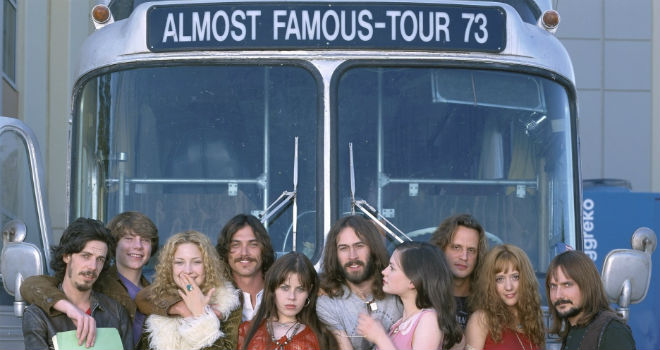
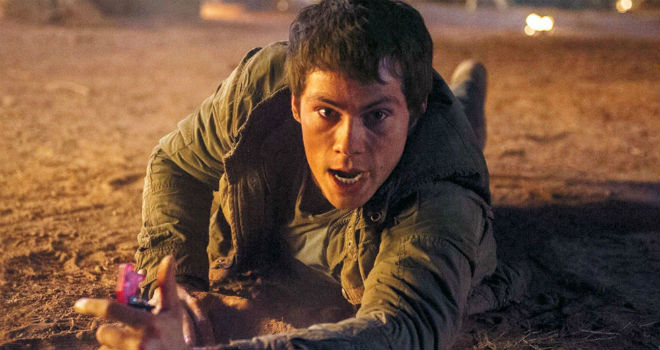 While many moviegoers are looking forward to the November release of "
While many moviegoers are looking forward to the November release of "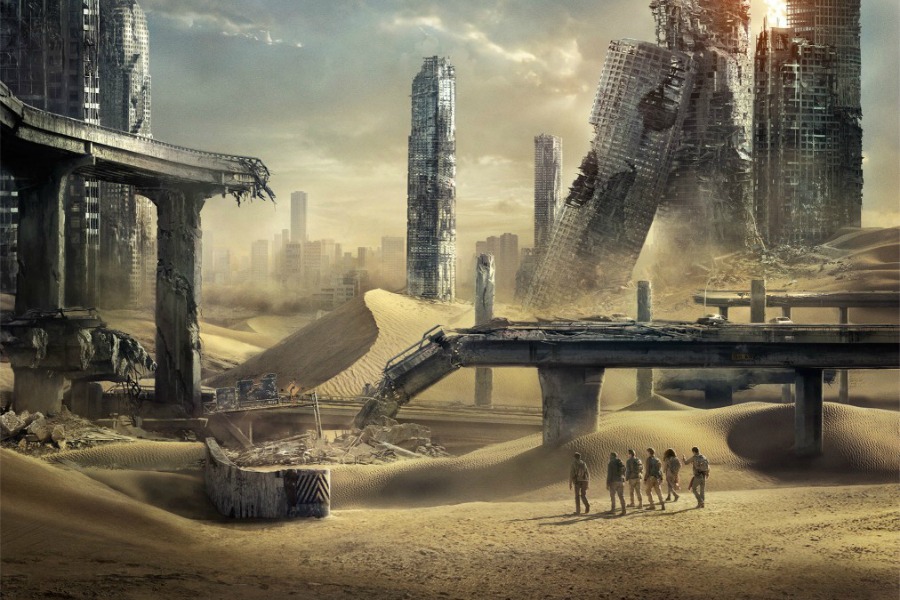 Don't expect Thomas and friends to be dropped into another isolated experiment with a giant maze in the middle. This time, our heroes will be venturing into the wider world.
Don't expect Thomas and friends to be dropped into another isolated experiment with a giant maze in the middle. This time, our heroes will be venturing into the wider world.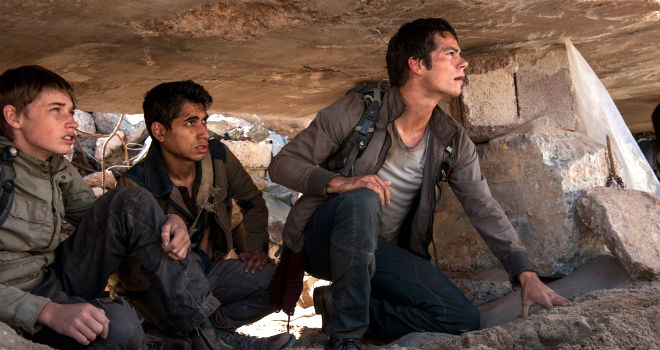 Thomas and friends finally encountered the faceless enemy controlling their every action in the climax of the first movie. Look for the sequel to delve much deeper into the mysterious organization that is WCKD, and reveal why they dumped a bunch of teenagers into a giant death trap.
Thomas and friends finally encountered the faceless enemy controlling their every action in the climax of the first movie. Look for the sequel to delve much deeper into the mysterious organization that is WCKD, and reveal why they dumped a bunch of teenagers into a giant death trap.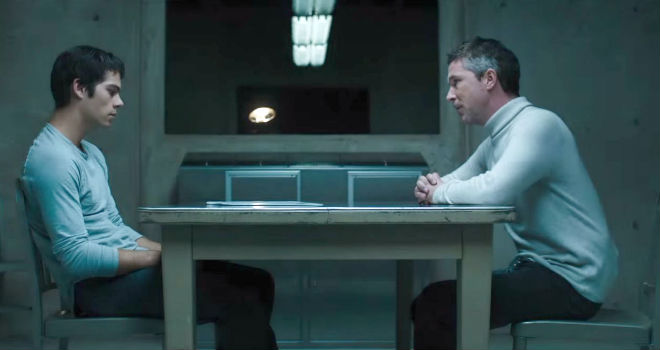 "Scorch Trials" will feature several returning characters from the first movie, including Thomas (Dylan O'Brien), Newt (Thomas Brodie-Sangster), Teresa (Kaya Scodelario), Minho (Ki Hong Lee) and the mysterious researcher Ava Paige (Patricia Clarkson).
"Scorch Trials" will feature several returning characters from the first movie, including Thomas (Dylan O'Brien), Newt (Thomas Brodie-Sangster), Teresa (Kaya Scodelario), Minho (Ki Hong Lee) and the mysterious researcher Ava Paige (Patricia Clarkson).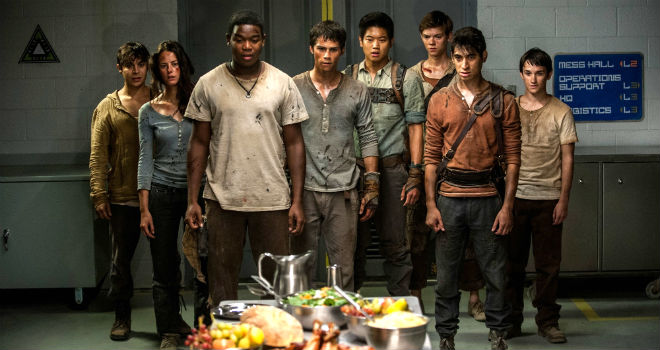 The first "Maze Runner" didn't seem to want viewers to know much about the true nature of this world, or the reason why dozens of innocent teens were dumped into a giant death trap and forced to build a Lord of the Flies-style civilization. As per usual in these types of mystery-driven stories, the characters with the answers always seemed to be the most tight-lipped.
The first "Maze Runner" didn't seem to want viewers to know much about the true nature of this world, or the reason why dozens of innocent teens were dumped into a giant death trap and forced to build a Lord of the Flies-style civilization. As per usual in these types of mystery-driven stories, the characters with the answers always seemed to be the most tight-lipped.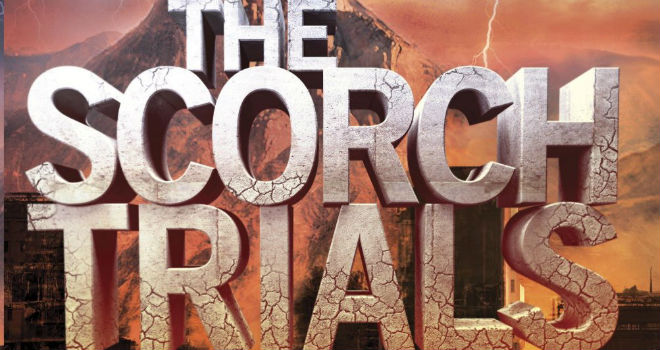 Book purists might want to brace themselves: The adaptation will be a bit different from its source material - more so than the first movie was.
Book purists might want to brace themselves: The adaptation will be a bit different from its source material - more so than the first movie was.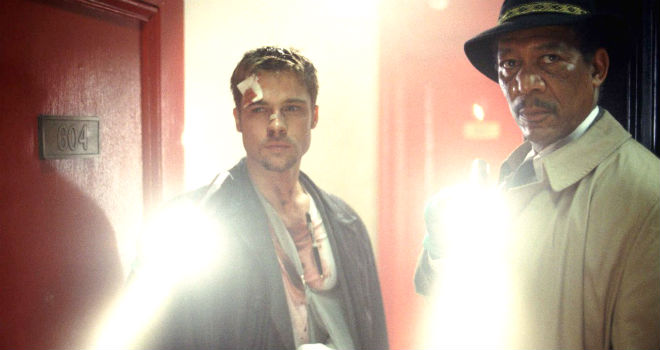 Two decades later, we're still totally creeped out by "
Two decades later, we're still totally creeped out by "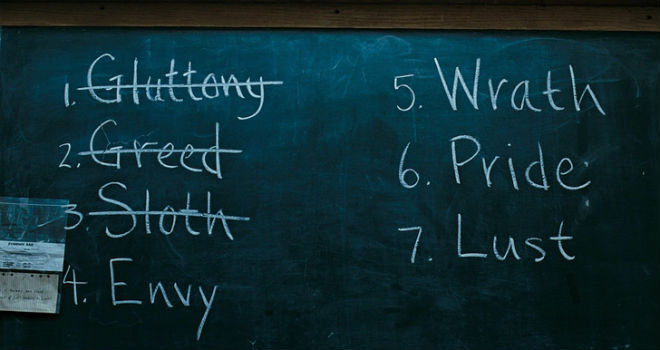 1. "Seven" screenwriter Andrew Kevin Walker has a cameo. He's the corpse seen at the beginning of the movie.
1. "Seven" screenwriter Andrew Kevin Walker has a cameo. He's the corpse seen at the beginning of the movie.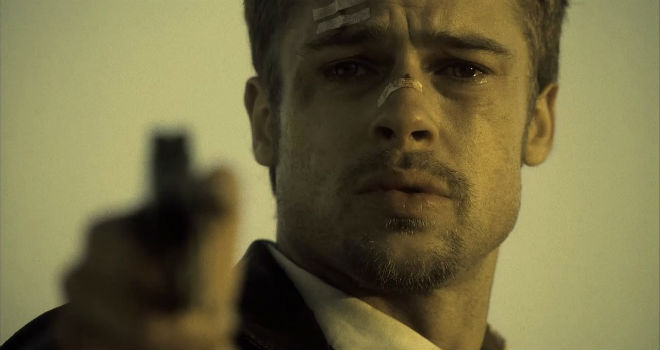 6. Similarly, Brad Pitt was not the first choice to play Somerset's hot-tempered partner, David Mills. But Denzel Washington and
6. Similarly, Brad Pitt was not the first choice to play Somerset's hot-tempered partner, David Mills. But Denzel Washington and 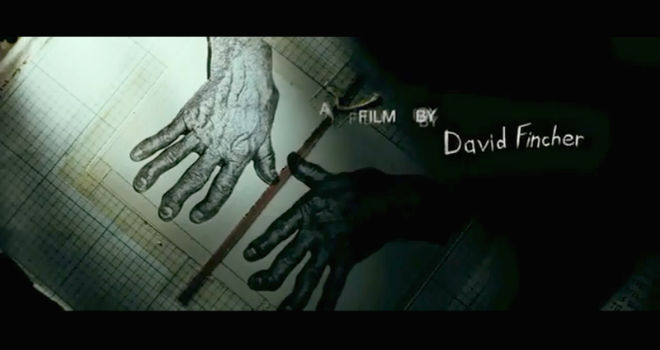 11. Like Fincher, graphic designer Kyle Cooper was working on just his second film, after "Dead Presidents." His credits for that were based on tabletop shots of paper money on fire. Seeing the word "God" burn up on a bill gave Cooper the idea of using the pages of John Doe's notebooks to generate the opening credits for "Seven" (pictured).
11. Like Fincher, graphic designer Kyle Cooper was working on just his second film, after "Dead Presidents." His credits for that were based on tabletop shots of paper money on fire. Seeing the word "God" burn up on a bill gave Cooper the idea of using the pages of John Doe's notebooks to generate the opening credits for "Seven" (pictured).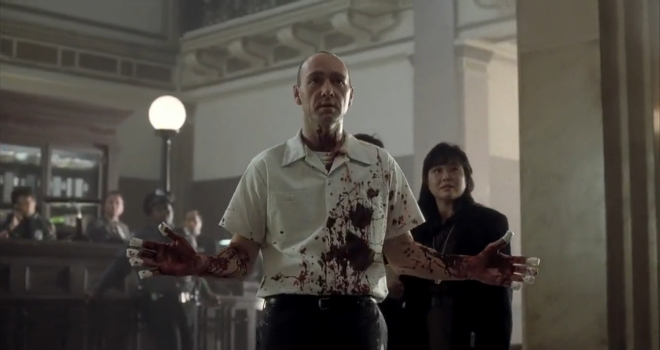 16. John Doe's books -- his handwritten journals documenting his street-level perceptions of humanity -- were handwritten. They took two months to finish writing, and cost a rumored $15,000
16. John Doe's books -- his handwritten journals documenting his street-level perceptions of humanity -- were handwritten. They took two months to finish writing, and cost a rumored $15,000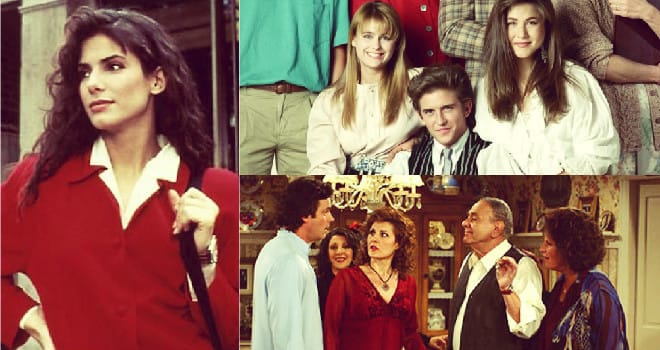
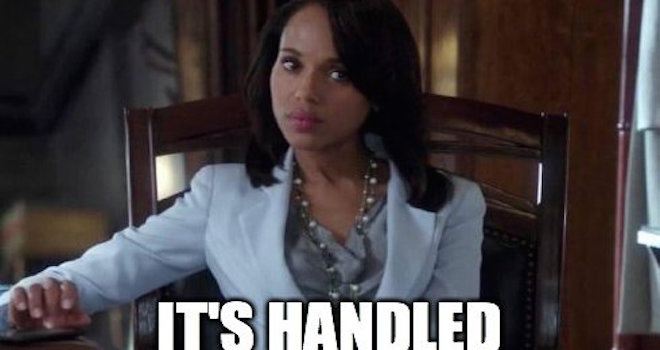 Being a loyal "
Being a loyal "
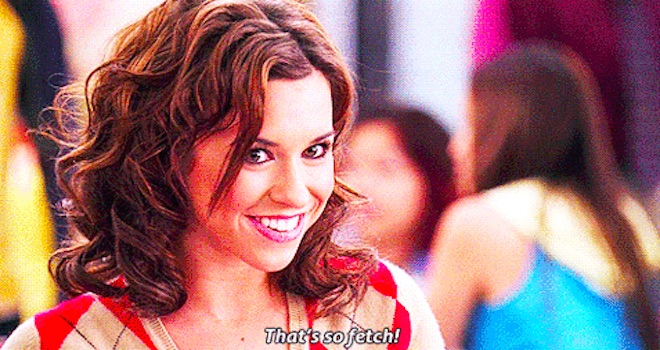
 [Source:
[Source:  Since its release 30 years ago,
Since its release 30 years ago,  1. Director
1. Director 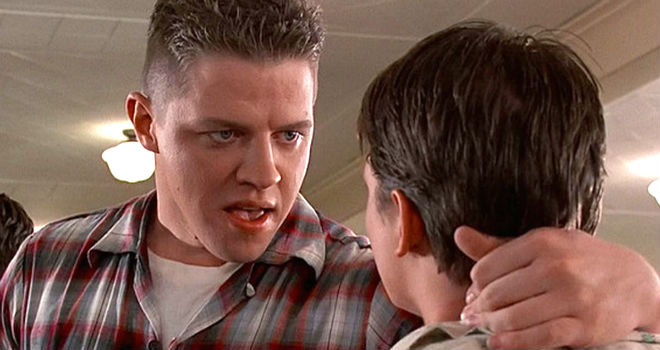 6. Bullying villain Biff Tannen (Thomas F. Wilson, pictured) was named for Ned Tanen, a studio executive Zemeckis and Gale had clashed with during the making of "Used Cars."
6. Bullying villain Biff Tannen (Thomas F. Wilson, pictured) was named for Ned Tanen, a studio executive Zemeckis and Gale had clashed with during the making of "Used Cars."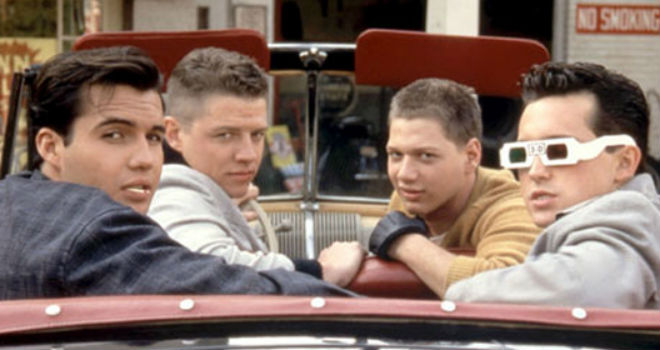 12. Yes, that's
12. Yes, that's 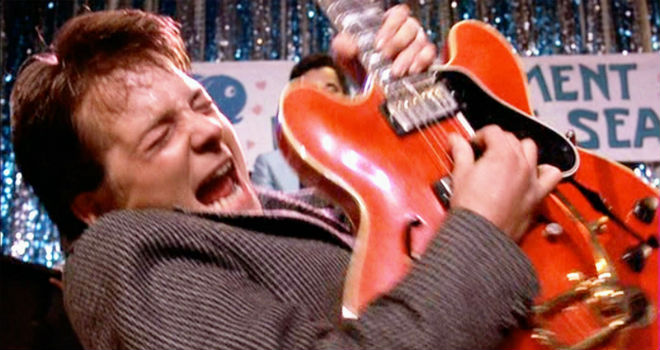 18. For Marty's all-important rock 'n' roll performance at the school dance, Fox learned to mimic the guitar moves with his hands, but his showboating solo was dubbed by guitarist Tim May. His vocals were dubbed by singer Mark Campbell of Jack Mack and the Heart Attack.
18. For Marty's all-important rock 'n' roll performance at the school dance, Fox learned to mimic the guitar moves with his hands, but his showboating solo was dubbed by guitarist Tim May. His vocals were dubbed by singer Mark Campbell of Jack Mack and the Heart Attack.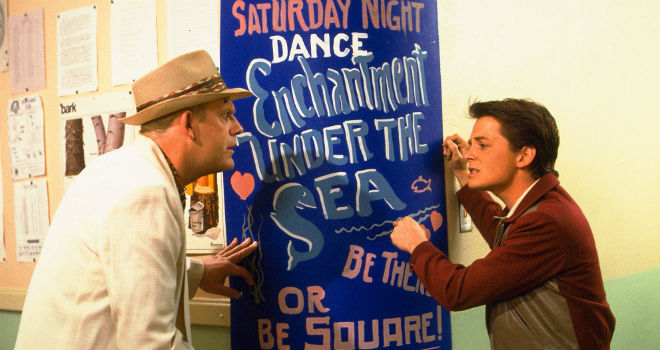 23. The film was No. 1 on the box office charts for 11 of 12 weeks throughout the summer of 1985. (It was knocked out of the top spot once, by "National Lampoon's European Vacation," but then it returned.)
23. The film was No. 1 on the box office charts for 11 of 12 weeks throughout the summer of 1985. (It was knocked out of the top spot once, by "National Lampoon's European Vacation," but then it returned.)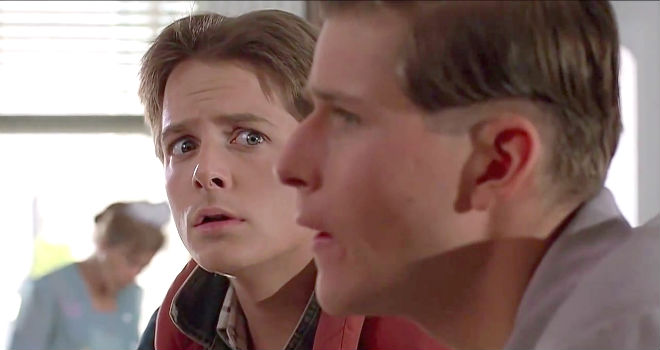 27. Crispin Glover also didn't appear in the sequels because of a salary dispute. Glover claims he was being given less than half of what the other principals were being offered. He also has said he believes his notoriously demented guest appearance on "Late Night with David Letterman" scared the filmmakers away. Nonetheless, he eventually reconciled with Zemeckis and played Grendel in the director's motion-capture epic, "Beowulf."
27. Crispin Glover also didn't appear in the sequels because of a salary dispute. Glover claims he was being given less than half of what the other principals were being offered. He also has said he believes his notoriously demented guest appearance on "Late Night with David Letterman" scared the filmmakers away. Nonetheless, he eventually reconciled with Zemeckis and played Grendel in the director's motion-capture epic, "Beowulf."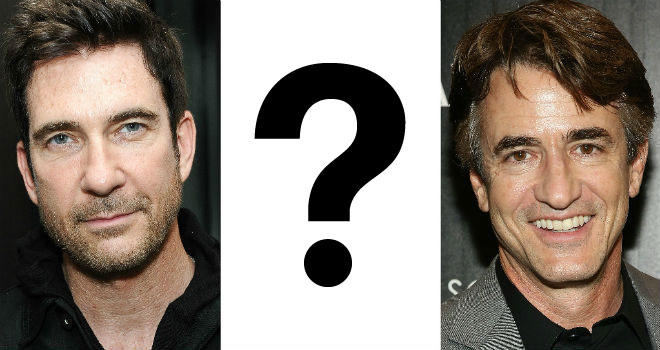 If you've never accidentally confused actors
If you've never accidentally confused actors 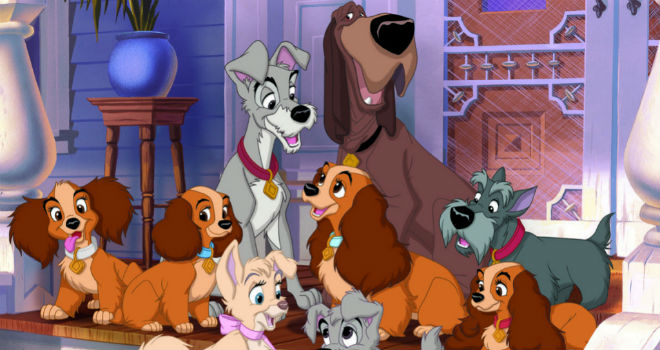 1. It took nearly 20 years to get the film made. The main character originated in sketches made by Disney animator Joe Grant in 1937, based on his own spaniel, whose name was Lady. Grant envisioned a short cartoon about a dog who's puzzled by the arrival of his masters' newborn baby.
1. It took nearly 20 years to get the film made. The main character originated in sketches made by Disney animator Joe Grant in 1937, based on his own spaniel, whose name was Lady. Grant envisioned a short cartoon about a dog who's puzzled by the arrival of his masters' newborn baby.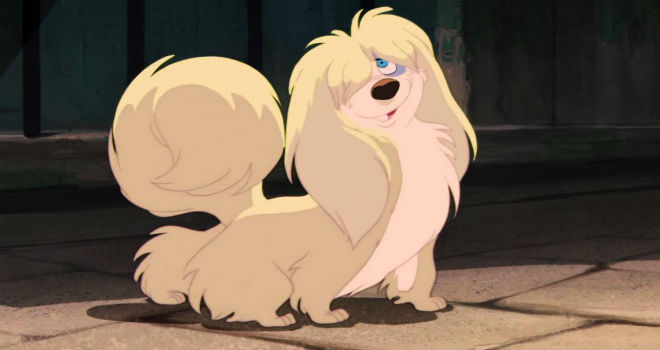 6. Peggy Lee was perhaps the first major star to sign on as a voice actor in a Disney cartoon. The torch singer voiced the roles of Darling, pound hound Peg, and cats Si and Am. She also co-wrote all the songs (with Sonny Burke) and sang four of them ("What Is a Baby," "La La Lu," "The Siamese Cat Song," and "He's a Tramp").
6. Peggy Lee was perhaps the first major star to sign on as a voice actor in a Disney cartoon. The torch singer voiced the roles of Darling, pound hound Peg, and cats Si and Am. She also co-wrote all the songs (with Sonny Burke) and sang four of them ("What Is a Baby," "La La Lu," "The Siamese Cat Song," and "He's a Tramp").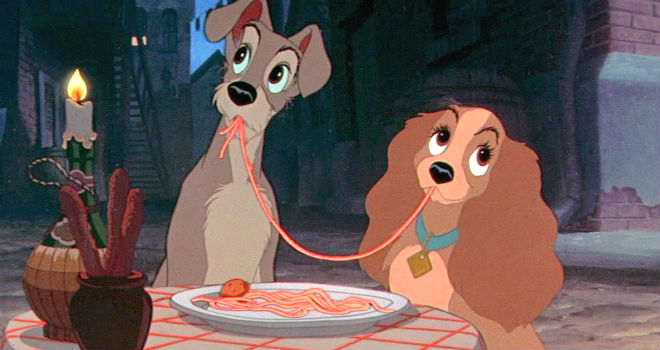 12. The iconic spaghetti scene almost didn't happen. Walt nixed the idea, assuming that the spectacle of two animals scarfing down pasta in tomato sauce would be messy and awkward. But animator Frank Thomas worked up a rough version of the scene that changed Disney's mind.
12. The iconic spaghetti scene almost didn't happen. Walt nixed the idea, assuming that the spectacle of two animals scarfing down pasta in tomato sauce would be messy and awkward. But animator Frank Thomas worked up a rough version of the scene that changed Disney's mind.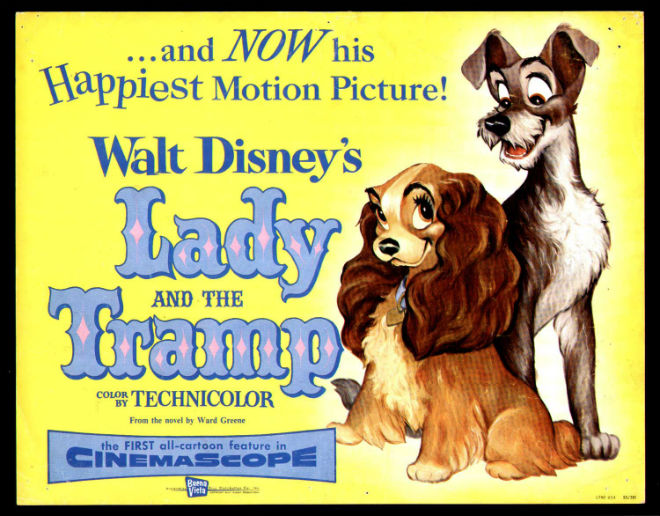 16. The CinemaScope process meant that the film was essentially made twice: Once in the standard, nearly square aspect ratio, and once in widescreen, after Walt decided to try the new format that was expected to lure people away from those new square boxes in their living rooms. But Walt learned that many theaters were still not equipped to project CinemaScope movies, so he released both versions.
16. The CinemaScope process meant that the film was essentially made twice: Once in the standard, nearly square aspect ratio, and once in widescreen, after Walt decided to try the new format that was expected to lure people away from those new square boxes in their living rooms. But Walt learned that many theaters were still not equipped to project CinemaScope movies, so he released both versions.
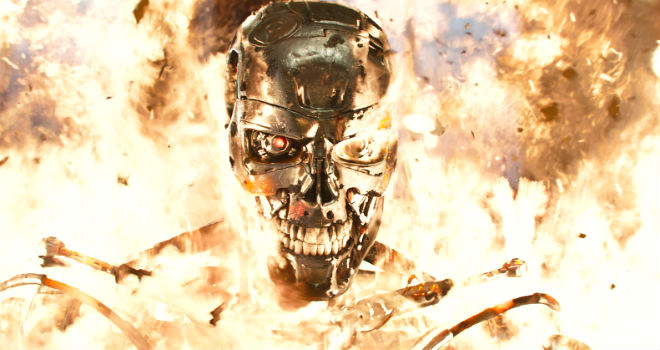 (SPOILER WARNING: Turn back now if you don't want to know anything about the plot of Arnold's new "Terminator" movie. I mean, more than what the trailers have already spoiled.)
(SPOILER WARNING: Turn back now if you don't want to know anything about the plot of Arnold's new "Terminator" movie. I mean, more than what the trailers have already spoiled.)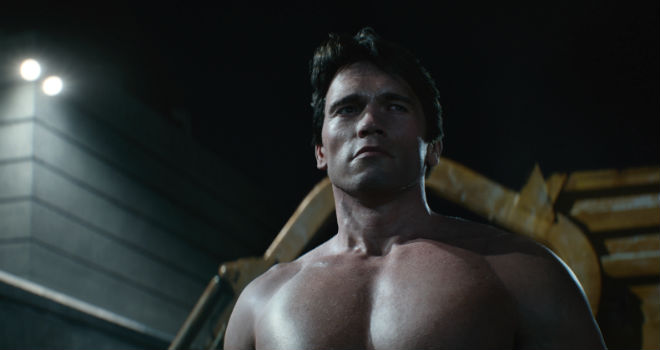 After "Batman Begins," the word "reboot" became the hottest phrase in Hollywood. And "Terminator: Genisys" is the latest product of that craze.
After "Batman Begins," the word "reboot" became the hottest phrase in Hollywood. And "Terminator: Genisys" is the latest product of that craze.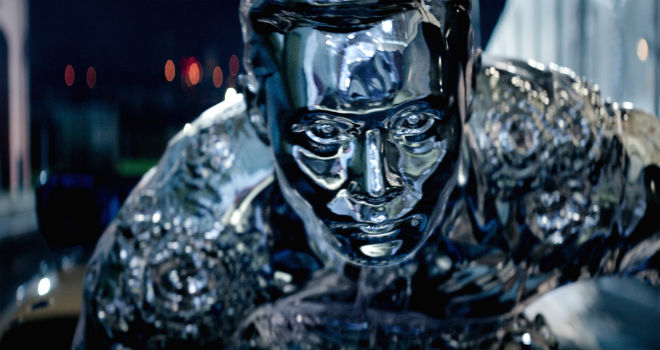 Significant chunks of the film's first act are comprised of recreated scenes and sequences from the first film, with iconic elements from the second film also added in. It's basically a 2015 remix of key moments from the 1984 film; in fact, the film largely plays out like a very expensive "mad lib" to all things "T1" and "Terminator 2: Judgment Day."
Significant chunks of the film's first act are comprised of recreated scenes and sequences from the first film, with iconic elements from the second film also added in. It's basically a 2015 remix of key moments from the 1984 film; in fact, the film largely plays out like a very expensive "mad lib" to all things "T1" and "Terminator 2: Judgment Day."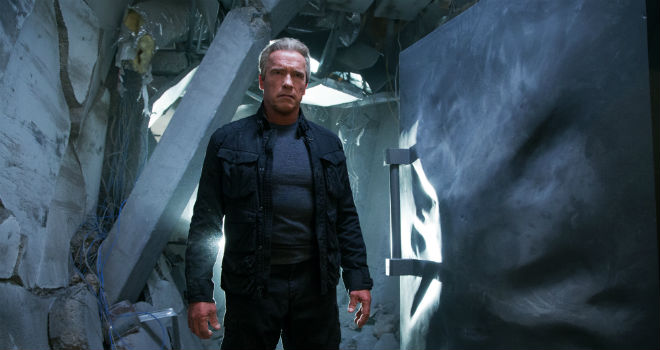
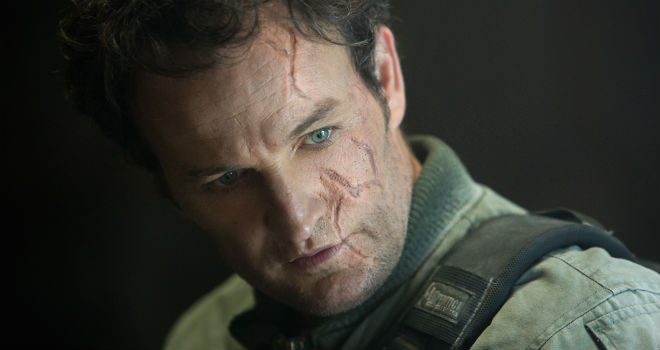
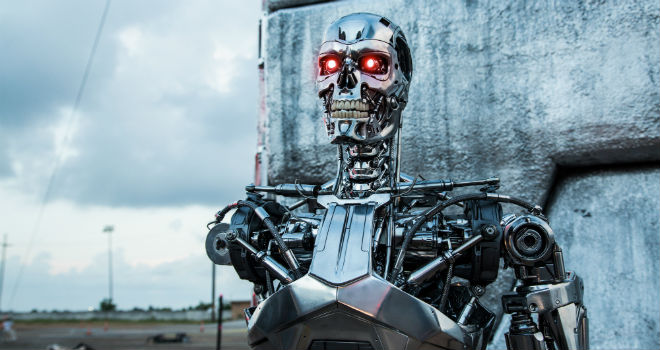 "Genisys" pulls a Marvel by adding a mid-credits tag that briefly sets up a potential sequel, just as the film's climatic scenes pave the way for a future where, for the first time in over three decades, Sarah Connor is free to choose her own fate.
"Genisys" pulls a Marvel by adding a mid-credits tag that briefly sets up a potential sequel, just as the film's climatic scenes pave the way for a future where, for the first time in over three decades, Sarah Connor is free to choose her own fate.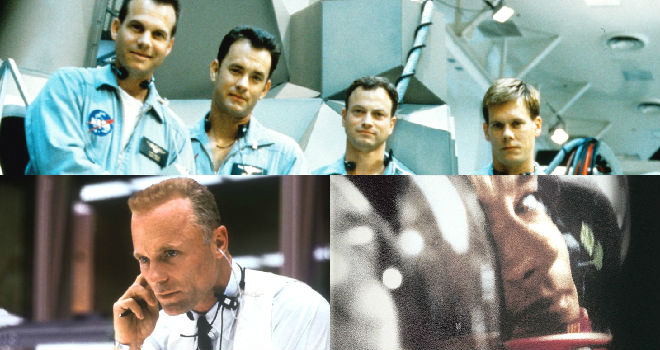 Not all Hollywood blockbusters are about rampaging dinosaurs, time-traveling cyborgs or spandex-clad heroes.
Not all Hollywood blockbusters are about rampaging dinosaurs, time-traveling cyborgs or spandex-clad heroes.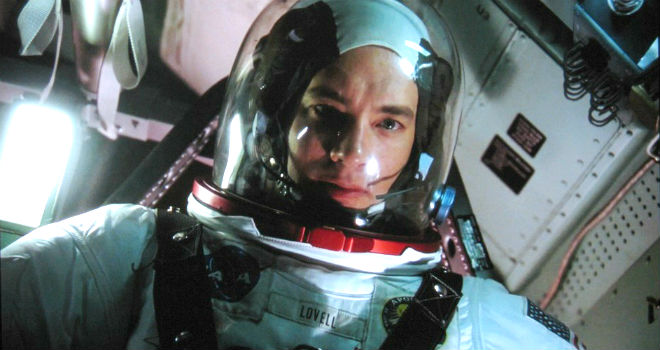 6. "Apollo 13" reunited "Forrest Gump" co-stars Tom Hanks and Gary Sinise. Weirdly enough, one scene between Hanks' Gump and Sinise's Lieutenant Dan involved the latter promising that he would become an astronaut if Gump became a shrimp boat captain. Sarcastic or not, at least he made good on his promise.
6. "Apollo 13" reunited "Forrest Gump" co-stars Tom Hanks and Gary Sinise. Weirdly enough, one scene between Hanks' Gump and Sinise's Lieutenant Dan involved the latter promising that he would become an astronaut if Gump became a shrimp boat captain. Sarcastic or not, at least he made good on his promise.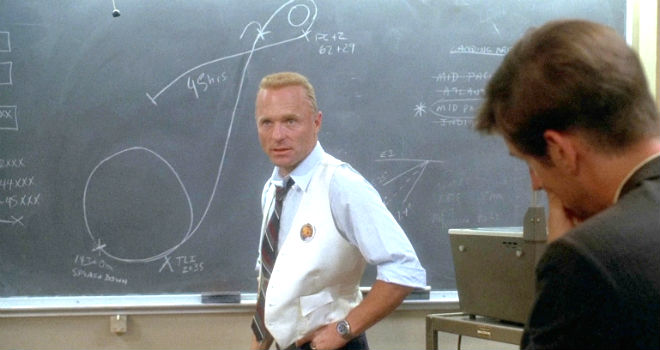 11. This film was one of two times Ed Harris played a character tasked with guiding astronauts back to Earth after a mechanical disaster. He provided the voice of Houston Mission Control in "Gravity."
11. This film was one of two times Ed Harris played a character tasked with guiding astronauts back to Earth after a mechanical disaster. He provided the voice of Houston Mission Control in "Gravity."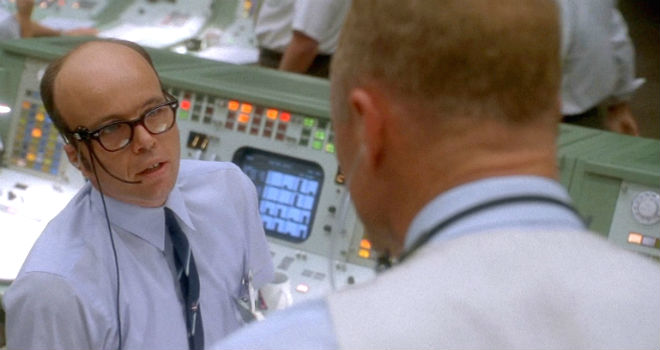 15. Ron Howard's brother, Clint (pictured above), played a significant role in the film as flight controller Seymour Liebergot.
15. Ron Howard's brother, Clint (pictured above), played a significant role in the film as flight controller Seymour Liebergot.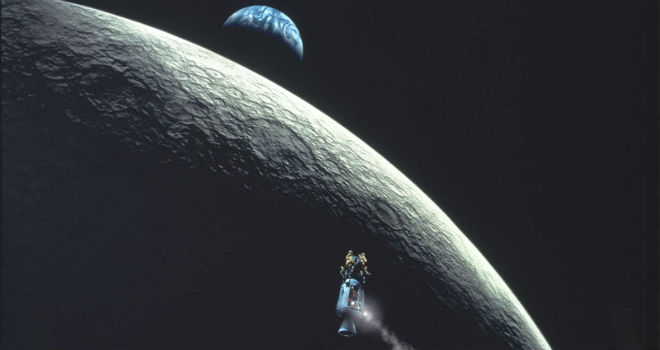 20. While the line "Failure is not an option" was spoken by Ed Harris in the film, it was never actually spoken by anyone during the Apollo 13 mission.
20. While the line "Failure is not an option" was spoken by Ed Harris in the film, it was never actually spoken by anyone during the Apollo 13 mission.
 Think you're a
Think you're a 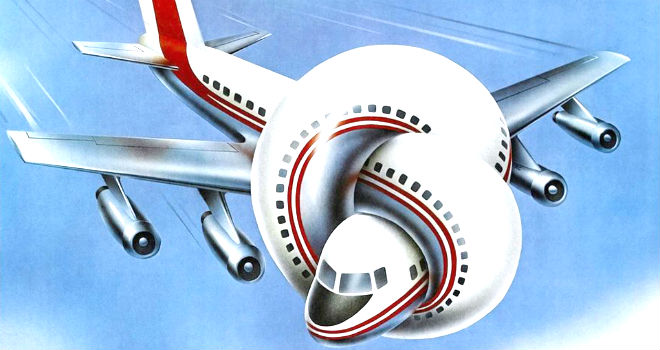 Looks like we picked the wrong week to quit celebrating milestones.
Looks like we picked the wrong week to quit celebrating milestones.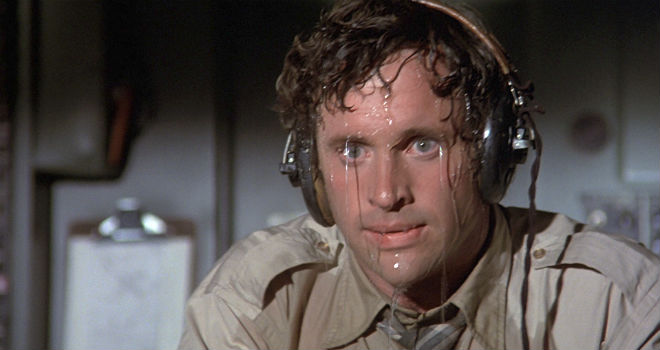 5. To play the hero, Ted Striker, Paramount wanted ZAZ to cast a conventional comic lead, like Chevy Chase or Bill Murray. But the filmmakers wanted someone who could work on their deadpan comic wavelength. Among those who auditioned for the role were Bruce Jenner and a then-unknown comic named David Letterman. (Yep, that happened.)
5. To play the hero, Ted Striker, Paramount wanted ZAZ to cast a conventional comic lead, like Chevy Chase or Bill Murray. But the filmmakers wanted someone who could work on their deadpan comic wavelength. Among those who auditioned for the role were Bruce Jenner and a then-unknown comic named David Letterman. (Yep, that happened.) 10. Lloyd Bridges, who played air traffic controller McCroskey, had starred on TV in the drama "San Francisco International Airport." ZAZ had sought "Airport" franchise mainstay George Kennedy for the role, but he and Universal felt that appearing in the spoof would damage the franchise.
10. Lloyd Bridges, who played air traffic controller McCroskey, had starred on TV in the drama "San Francisco International Airport." ZAZ had sought "Airport" franchise mainstay George Kennedy for the role, but he and Universal felt that appearing in the spoof would damage the franchise. 13. Leslie Nielsen, who had played the doomed ship captain in "The Poseidon Adventure," rounded out the cast as Dr. Rumack. Of course, "Airplane!" launched a second career for him as a deadpan comic leading man in movies from the "Naked Gun" movies to the "Scary Movie" horror spoofs.
13. Leslie Nielsen, who had played the doomed ship captain in "The Poseidon Adventure," rounded out the cast as Dr. Rumack. Of course, "Airplane!" launched a second career for him as a deadpan comic leading man in movies from the "Naked Gun" movies to the "Scary Movie" horror spoofs. 20. The ZAZ team themselves have cameos in the film, as do several of their family members. The Zucker brothers are the ground crew at the beginning who accidentally cause a plane to crash through a terminal gate window. Abrahams is one of the religious fanatics Rex Kramer knocks over. Mom Charlotte Zucker is the passenger trying in vain to apply her makeup. The Zuckers' sister, Susan Breslau, plays a ticket agent. Abrahams' mother is the woman initially sitting next to Dr. Rumack.
20. The ZAZ team themselves have cameos in the film, as do several of their family members. The Zucker brothers are the ground crew at the beginning who accidentally cause a plane to crash through a terminal gate window. Abrahams is one of the religious fanatics Rex Kramer knocks over. Mom Charlotte Zucker is the passenger trying in vain to apply her makeup. The Zuckers' sister, Susan Breslau, plays a ticket agent. Abrahams' mother is the woman initially sitting next to Dr. Rumack.

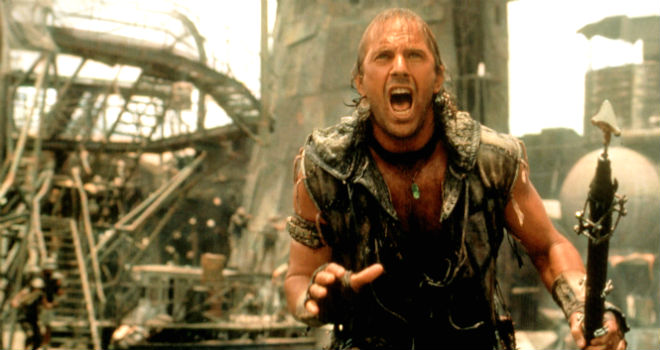 It's been two decades, and still, the waves from the tsunami that was "
It's been two decades, and still, the waves from the tsunami that was "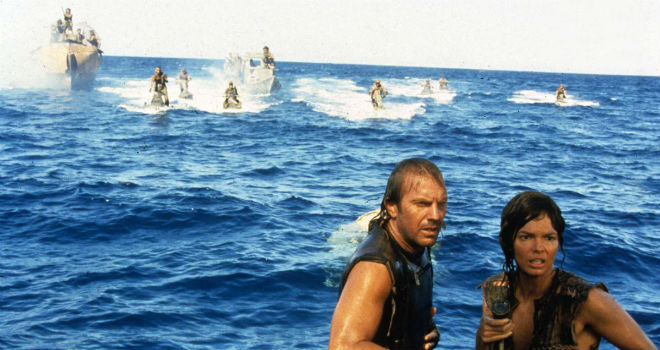 5. If "Waterworld" reminds you a lot of the "
5. If "Waterworld" reminds you a lot of the "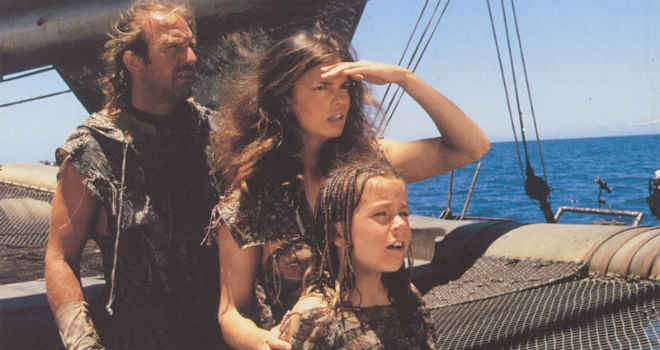 8. Early in the shoot, co-stars
8. Early in the shoot, co-stars 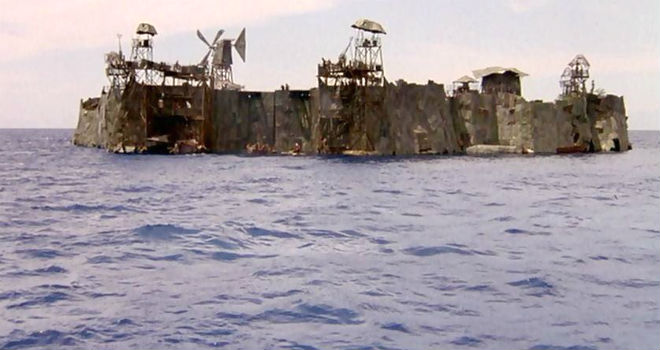 14. All the turmoil had caused the shoot to balloon from a scheduled 96 days to 157 days, and the budget swelled as a result. By the time distribution and marketing costs were added, "Waterworld" had a price tag of $235 million.
14. All the turmoil had caused the shoot to balloon from a scheduled 96 days to 157 days, and the budget swelled as a result. By the time distribution and marketing costs were added, "Waterworld" had a price tag of $235 million.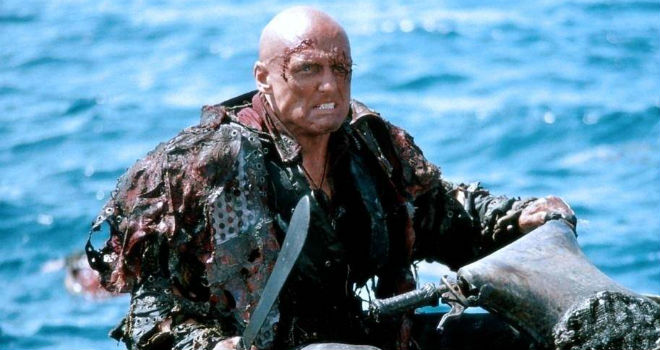 17. At the 1996 Golden Raspberry Awards, "Waterworld" was nominated for four Razzies, including Worst Picture, Worst Actor, and Worst Director. It lost three of the four, but it won Worst Supporting Actor for villain
17. At the 1996 Golden Raspberry Awards, "Waterworld" was nominated for four Razzies, including Worst Picture, Worst Actor, and Worst Director. It lost three of the four, but it won Worst Supporting Actor for villain 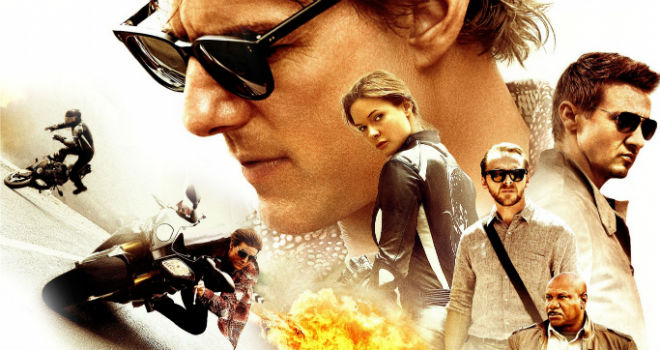 After 19 years,
After 19 years, 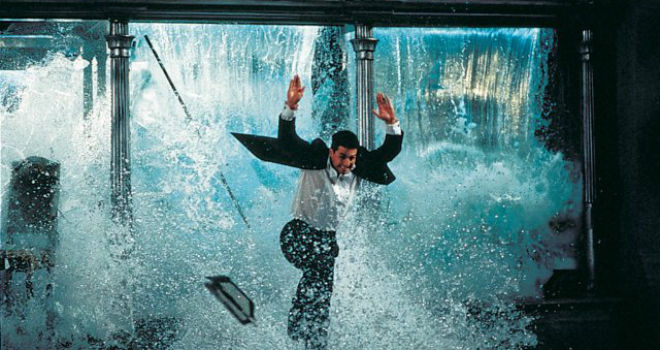 1. Before locking down
1. Before locking down 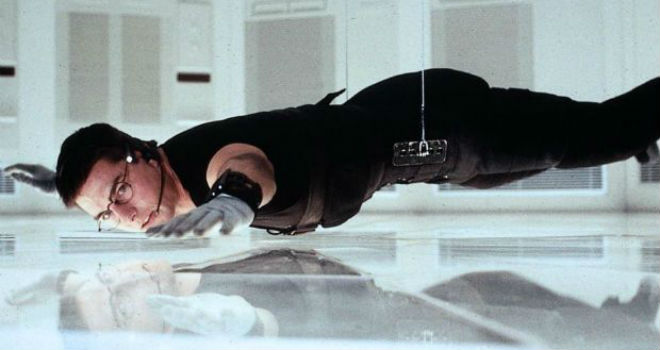 4. During the film's most iconic set piece, the stealing of the NOC List (above), note the clock on the wall: The time displayed jumps ahead in time (sometimes drastically) in certain shots -- even though the scene is supposed to be occurring in (near) real time.
4. During the film's most iconic set piece, the stealing of the NOC List (above), note the clock on the wall: The time displayed jumps ahead in time (sometimes drastically) in certain shots -- even though the scene is supposed to be occurring in (near) real time.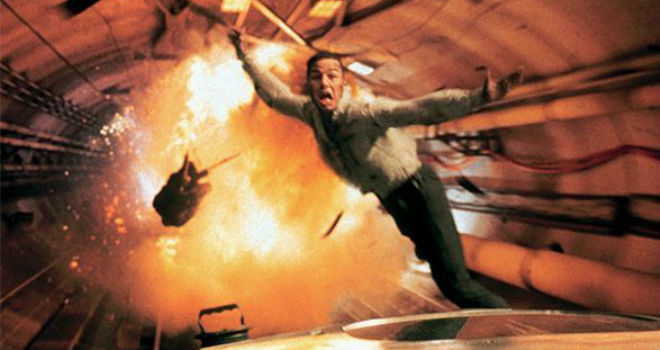 8. The climactic train sequence (above) took six weeks to shoot, and is made up of 152 shots. Cruise and Voight shot most of the sequence on a London soundstage, duking it out atop a mock-up of the bullet train's roof.
8. The climactic train sequence (above) took six weeks to shoot, and is made up of 152 shots. Cruise and Voight shot most of the sequence on a London soundstage, duking it out atop a mock-up of the bullet train's roof.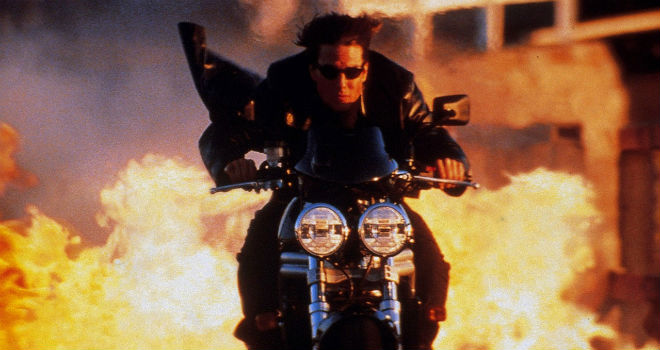 10. Hot off the success of their film, "
10. Hot off the success of their film, "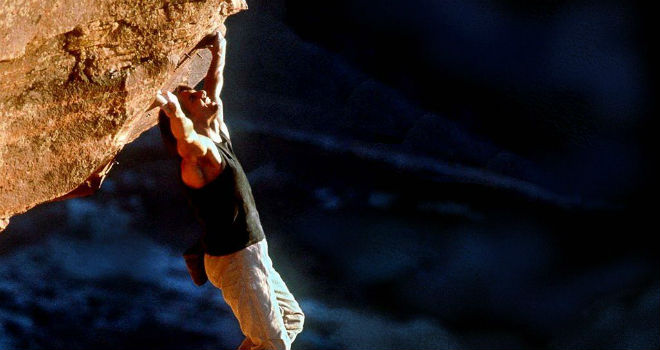 13. The opening scene, where Cruise climbs and leaps from a 2,000-foot cliff, was the scariest and most challenging of Woo's career. Cruise did the aforementioned stunt himself, with no safety net on the ground (naturally) but with a safety harness, which was digitally-removed in post. That's just how Cruise rolls.
13. The opening scene, where Cruise climbs and leaps from a 2,000-foot cliff, was the scariest and most challenging of Woo's career. Cruise did the aforementioned stunt himself, with no safety net on the ground (naturally) but with a safety harness, which was digitally-removed in post. That's just how Cruise rolls.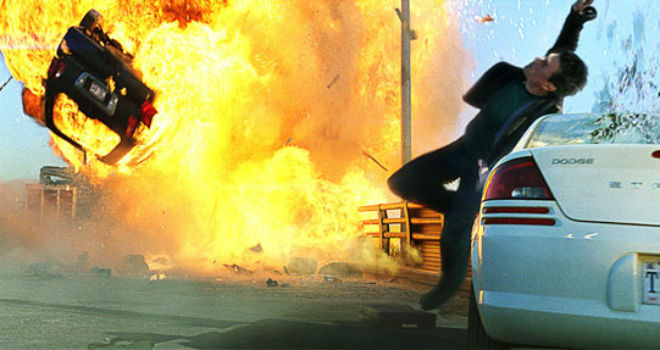 15. The film's intense opening scene, where villain Davian (
15. The film's intense opening scene, where villain Davian (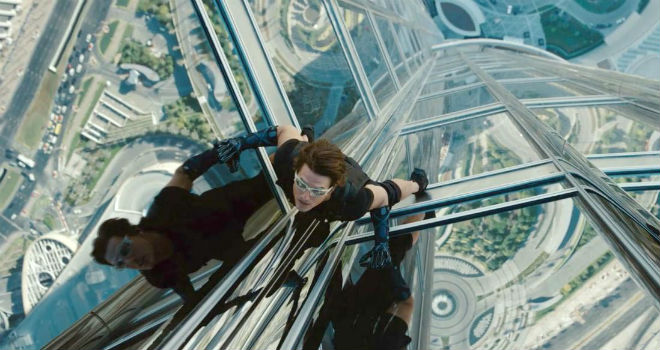 22. "Rogue Nation" writer-director
22. "Rogue Nation" writer-director